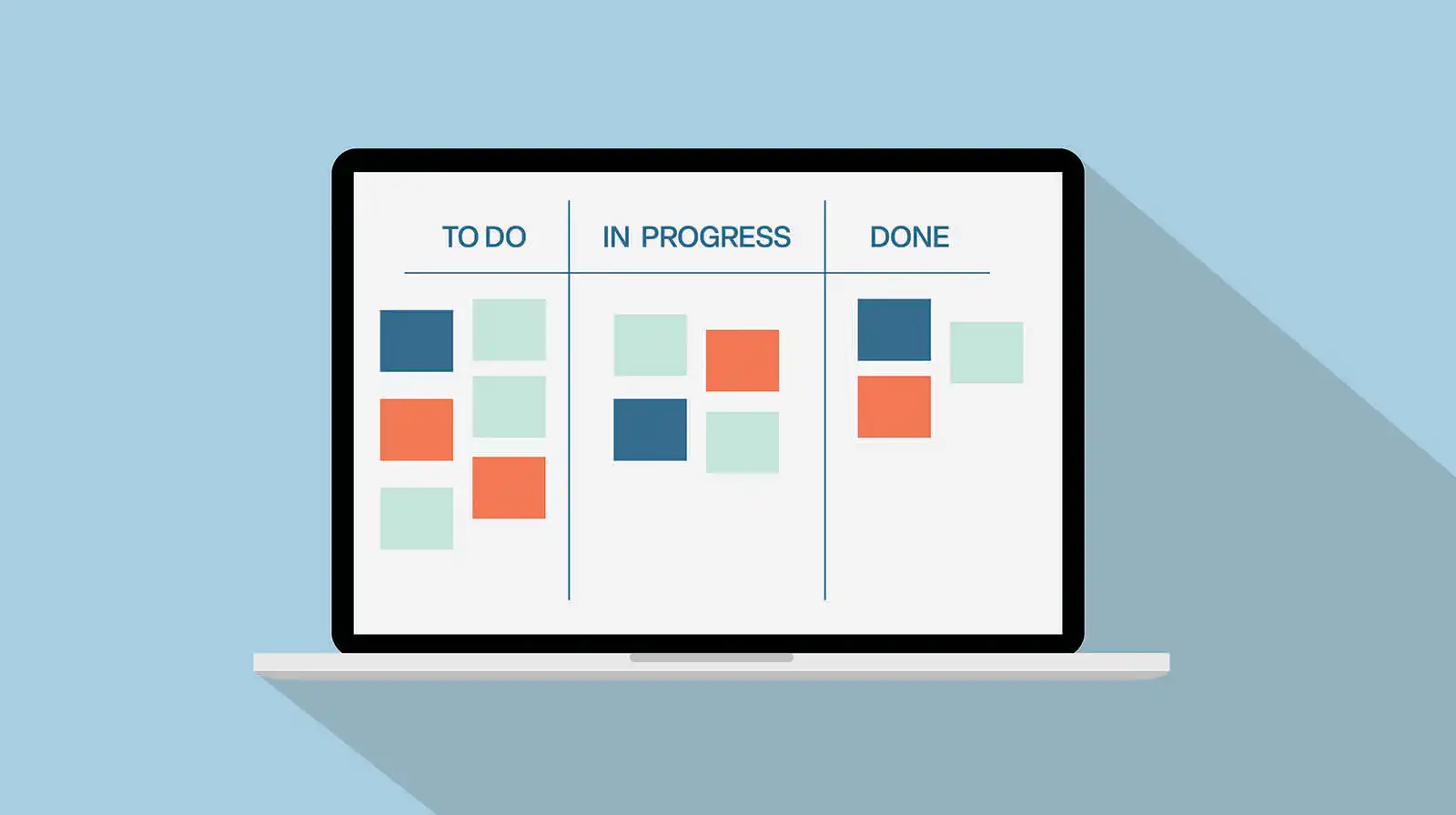
The Best Laid Plans: Why Agile Isn’t Delivering What You Expected
 Read Time: 8 minutes
Read Time: 8 minutesMany teams tout being "Agile"—but are they really? Some organizations are "Agile" in name only, participating in all the ceremonies of an Agile-inspired methodology, without actually having technical agility. How can you make sure your team isn't one of them?
Agile is a philosophy rooted in flexibility and responsiveness. As such, it’s the perfect match for the building of software—a malleable, ever-changing tool for the ever-changing demands of modern businesses. When implemented correctly, it can cut costs, speed up delivery, and improve the end product. But this requires a clear understanding—by all parties—of its foundational principles.
All too often, however, we see companies implementing this philosophy incorrectly—in rigid, unresponsive ways via misunderstood or poorly-understood methodologies. When that happens, time and money are wasted, not saved. The Agile baby ends up being thrown out with the methodology bathwater, and the organization is back to square one.
For leaders and business owners, executing practical applications of Agile demands that everyone involved understand the principles behind the methods so well that they eclipse the methods altogether.
Experience has shown that having morning stand-ups and using Jira won’t automatically make you Agile. But becoming truly Agile will automatically lead to daily communication and continuous delivery. Making these changes requires that organizations give up any culture of micromanagement, gatekeeping, or communication policing. Trust is at the core of following Agile principles. Let’s dig into these principles and see how they are often misapplied.
Agile Principle #1: People and Interactions Over Processes and Tools
One of the principles of the Agile Manifesto states, "Build projects around motivated individuals. Give them the environment and support they need, and trust them to get the job done." While tools and processes do have value, they are not as important as the individuals that drive them or the interactions that they serve.
For example, one of the most common Agile methodologies, Scrum, uses the concept of a “daily stand-up” to stimulate face-to-face communication within the team. When the value behind this agenda item isn’t fully understood, the daily stand-up can degrade into status reporting sessions. These meetings should serve as platforms for team members to collaborate and tackle obstacles together, not recount activities to managers.
When management dominates these meetings, team members may feel less inclined to share challenges openly, hindering problem-solving and team cohesion.

Is this happening to you?
- Your team spends more time updating ticketing systems or navigating bureaucratic processes than it does collaborating directly on project challenges.
- Daily stand-ups have turned into micromanagement sessions, with too much emphasis on deadlines and accountability.
The best way to address this is to keep management out of the daily stand-up. Team members are meant to share real challenges and work together on solutions, not give an accounting of their day or impress the top brass. When team members can trust each other to communicate freely in the daily stand-up, and when management can trust their teams enough to be absent from this forum, then the value of this meeting is realized over the process.
Agile Principle #2: Working Software Over Comprehensive Documentation
Agile uses working software as “the primary measure of progress." While documentation is necessary, it can often delay the actual development and delivery of a product. Agile seeks to adapt more readily to changes and user needs without being constrained by a predefined and possibly outdated plan.
Agile does not eliminate documentation but redefines its purpose and scope. Documentation in Agile projects serves the need for knowledge sharing and future maintenance but is kept as lean as possible. However, teams sometimes overdo it, creating exhaustive documents that bog down the development process.
Overemphasis on documentation can cause sprints to inadvertently morph into mini-waterfalls, with feedback and adaptation being delayed until the end of the process. This traps teams in a cycle of over-planning and under-delivering, diminishing the amount and quality of feedback cycles from users.

Is this happening to you?
- Your documentation practices have caused your sprints to inadvertently morph into mini-waterfalls, with feedback and adaptation being delayed until the end of the process.
- Your team is trapped in a cycle of over-planning and under-delivering, diminishing the amount and quality of feedback cycles you should be getting from your users.
To preserve Agile's intent, it's essential to incorporate continuous feedback and testing throughout the cycle and respond to that feedback with working software, not comprehensive documentation. Keep documentation lean—just enough to support the product's use and maintenance without hindering development pace.
Agile Principle #3: Customer Collaboration Over Contract Negotiation
Most needs and changes come from user feedback after they have had their hands on an iteration of the product. They may have initially thought they knew what they wanted, but after some hands-on experience, they realize that they need something different. Or their business landscape may have evolved; new technologies may have emerged that changed the game.
Agile is designed to engage stakeholders as ongoing collaborators in the creation process, not just passive recipients of an end product. This requires direct communication and continuous feedback, allowing for a more fluid development.
As you might imagine, certain kinds of contracts or goals developed at the start of a project have a hard time keeping up with such an adaptive process. Another popular Agile methodology, Kanban, can be interpreted in ways that focus too much on maintaining workflow efficiency without sufficient mechanisms for integrating continuous feedback and adaptation. For example, teams might prioritize "clearing the board" by emphasizing work-in-progress (WIP) limits and agreed-upon deadlines. While this keeps the system flowing, it may come at the cost of pausing to review whether the feature "In Progress" still meets the updated requirements or user needs.
Without regular reassessments, teams deliver features that meet the original specifications but fail to meet current needs. This can result in wasted effort and products that don't satisfy users.

Is this happening to you?
- Your team treats the "Done" column as a final step without looping back into review cycles. In a rush to keep things moving, team members may skip regular feedback sessions or delay stakeholder reviews, thinking the continuous flow alone guarantees quality.
- Without regular reassessments, you deliver features that meet the original specifications but fail to meet current needs.
To better align with this Agile principle, design contracts that allow for flexibility and changes. Incorporate clauses that accommodate evolving requirements without needing extensive renegotiations. Establish regular feedback sessions and stakeholder reviews to continuously gather input and adjust priorities as needed. Foster open communication by empowering teams to collaborate directly with stakeholders and users, ensuring the final product truly meets their needs and adapts to any new insights or market shifts.
Agile Principle #4: Responding to Change Over Following a Plan
While Principle #3 is about adaptation between the team and its client, Principle #4 is all about adaptation within the team and the team’s mindset towards change. "Welcome changing requirements, even late in development. Agile processes harness change for the customer's competitive advantage." This manifesto principle underscores that change is inevitable and often beneficial in project development.
In frameworks like SAFe (Scaled Agile Framework), the extensive structuring can sometimes create barriers to quick adaptation by introducing layers of coordination, planning, and formal processes. While SAFe is designed to scale Agile principles across large organizations, its structure can unintentionally slow down decision-making and responsiveness.
Teams may become locked into rigid objectives within Program Increments (PIs), which typically span multiple weeks and require detailed upfront planning. Committing to specific features within these timeframes can make mid-course adjustments challenging, especially when new information or market changes arise. Adapting to these changes often requires renegotiating multiple teams' priorities, rescheduling dependent work, and coordinating across different organizational levels.
Additionally, the role of centralized decision-makers, like Product Management or Solution Architects, can sometimes introduce bottlenecks. If your organization has a culture of limiting communication between departments, or funneling all communication through a CTO or other manager, changes will often be lost or misunderstood.
If too much authority or decision-making power is concentrated at higher levels, teams may find themselves waiting for approvals or guidance, delaying their ability to act on immediate feedback or market shifts. This slows down the feedback loop that is vital for Agile, diluting the framework's core promise of rapid adaptation.
The inability to adapt quickly leads to missed opportunities and a product that may not meet current market needs. Teams become frustrated by bureaucratic delays, and innovation is stifled.

Is this happening to you?
- Your development team identifies needed changes mid-PI but is unable to reprioritize and address the issue without approval from another department.
- Departments are focused on the predefined objectives of the current PI, and they hesitate to approve any shift in focus or delay the decision until the next PI Planning session.
- Communication between teams is funneled through a CTO or single manager, causing delays and misunderstandings.
Giving your team the trust it needs to feel comfortable making changes will lead to greater innovation and speedy responses to market shifts. Allowing it to communicate directly with stakeholders, users, and other departments will super-charge its agility. Your team will be able to solve problems that you didn’t even know you had.
Empower teams to make decisions at the lowest possible level, reduce unnecessary layers of approval, and encourage cross-functional communication. By decentralizing authority and promoting transparency, your organization can respond to changes swiftly and effectively.

Becoming Truly Agile
Agile methodologies offer powerful frameworks for building better software, but they are not magic solutions, especially when misapplied. The truth is, no Agile practice will reach its full potential unless an organization is willing to shift its culture away from micromanagement and rigid control.
Agile thrives on trust, autonomy, and empowerment—rituals like stand-ups, retrospectives, and sprint planning aren't just check-the-box exercises. They exist to empower teams, create transparency, and support continuous improvement. But if these ceremonies become rigid, top-down mandates where teams are merely reporting status to managers, they lose their purpose. When the focus is on controlling tasks rather than enabling collaboration, the principles of Agile have been lost entirely.
It’s not enough to implement the ceremonies; organizations must adopt a mindset that allows teams to truly self-organize, innovate, and adapt. Only then can Agile principles take root, leading to real technical agility and meaningful outcomes.

We are custom software experts that solve.
From growth-stage startups to large corporations, our talented team of experts create lasting results for even the toughest business problems by identifying root issues and strategizing practical solutions. We don’t just build—we build the optimal solution.
From growth-stage startups to large corporations, our talented team of experts create lasting results for even the toughest business problems by identifying root issues and strategizing practical solutions. We don’t just build—we build the optimal solution.


